Case site
Taking Cue from our studio project this module, we located our site in Kumbharwada Dharavi.
Dharavi is considered one of the most densely populated informal settlements in Asia.
But on the flipside, it houses many informal industries, such as textile, recycling, leather.
We select our case site within a pocket inside Kumbharwada, which is the the pottery colony at Dharavi.
Method
We used kangaroo for draping, ladybug for solar radiation, voronoi for unit cells and pufferfish for aggregation.

Method
Draping
All available space is used in Dharavi, We chose to adopt the same local space maximising strategies.
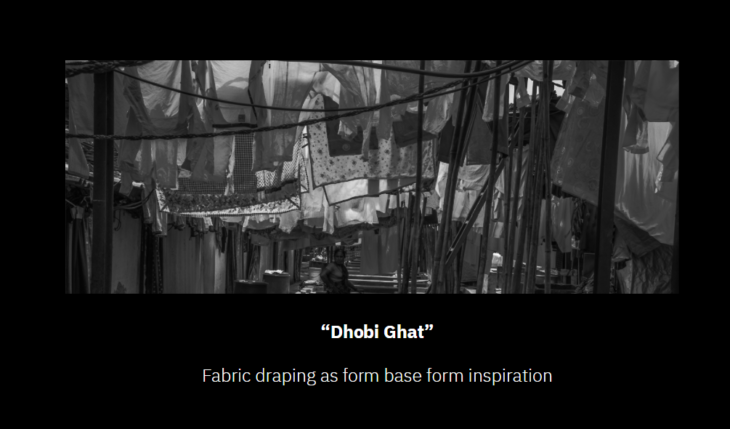
Draping in Dharavi
Eventually we decided to pitch cloth drapings directly from building edges, since we know these are masonry and can handle the loads. This also allowed us greater control over the drape and also enabled us to span over the courtyards.
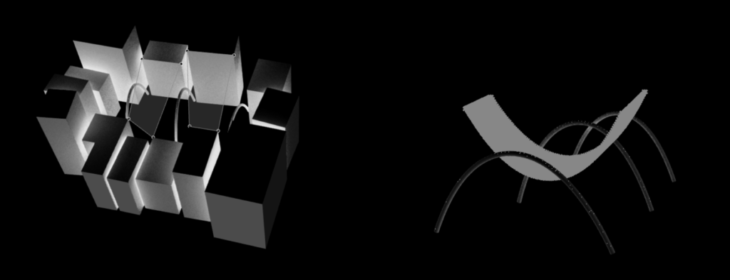
Cloth draping
Radiation Analysis
Once we had arrived at draped forms on site, we used Ladybug for radiation analysis on the meshes. We extracted the analysis results from Ladybug and associated these values with our draped mesh so the resultant form would be responsive to local conditions.
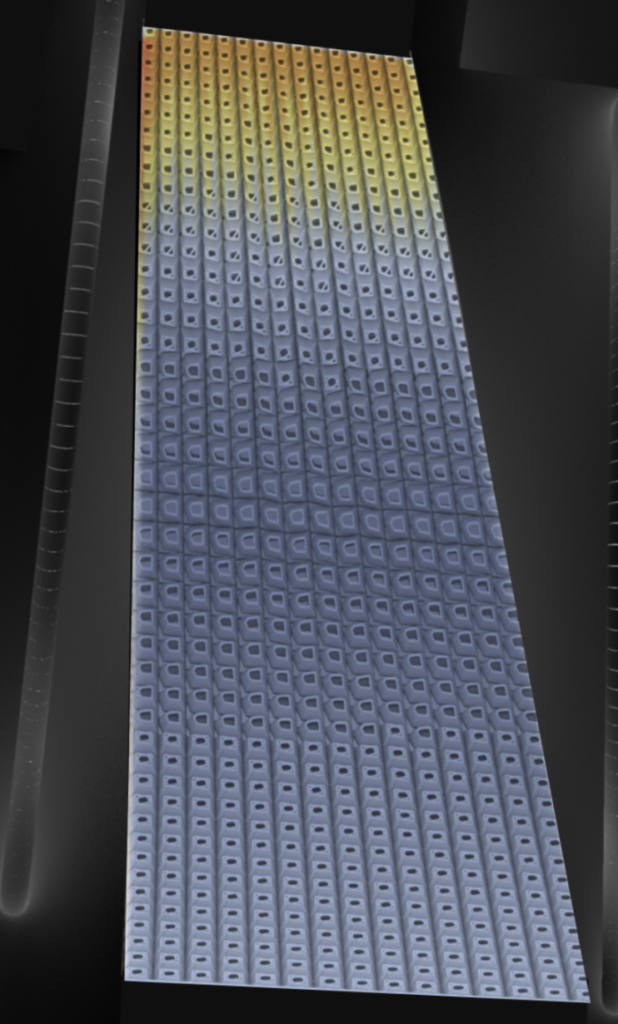
Radiation analysis
Unit Cell
Given the similarly of voronoi derived forms to local pottery, we decided to create unit cells from a voronoi base. This strategy also allowed us to create unit cells with variation and a hierarchy for a mini system that is easy to implement and fabricate in the local context.

Voronoi Unit Cells
Hierarchy of Unit cells
Each individual unit cell was analyzed based on its proportions and assigned a usage percentage. This hierarchy was implemented for the placement of cells using pufferfish and enabled their association with radiation values to be mapped onto our draped meshes.

Hierarchy of unit cells
Aggregation
Twisted boxes were created and aligned to the draped surface. The base dimension of our twisted boxes is 8000 cubic centimeters.
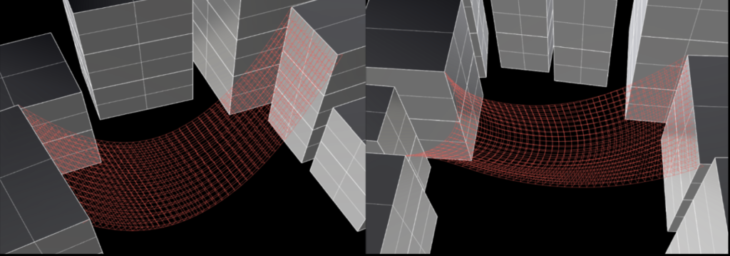
Aggregation : Twisted boxes
We used the radiation values as markers for the placement of each unit cell type. Unit cells with smaller openings were applied where high radiation was detected, and vise versa.
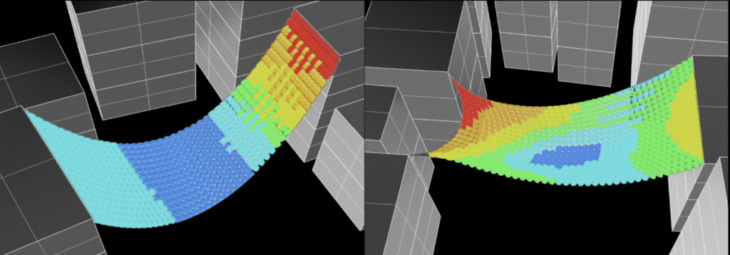
Aggregation : Unit cells
Program Diagram
Our aggregated unit cells can be fabricated from clay in the local pottery village, and will sit inside a plain-weave net made from locally available rope, held in tension between the building massing corners.
In addition to the shading benefit we described, when the clay is wet, it will provide cooling in the courtyard, and due to the absorbent quality of clay, it will also provide some air purification.
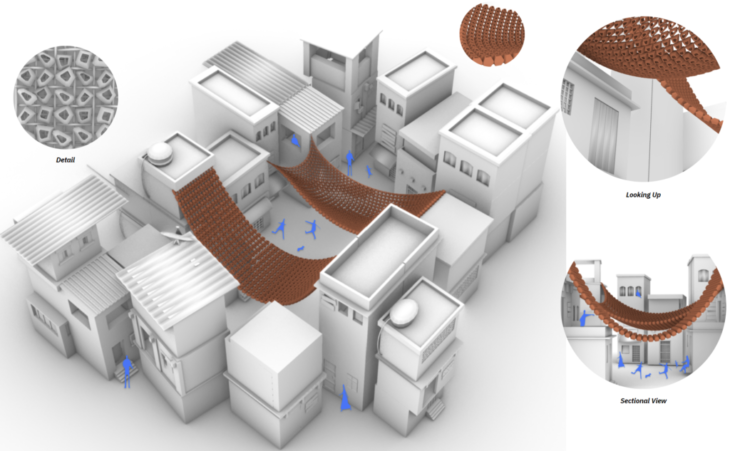
CMPLX FORMS is a project of IAAC, Institute for Advanced Architecture of Catalonia developed in the Master In Advanced Computation For Architecture & Design 2021/22 by Students: Takeaki Sakakibara, Lucie Ketelsen and Varun Mehta | Faculty: Rodrigo Aguirre and Hesham Shawqy
